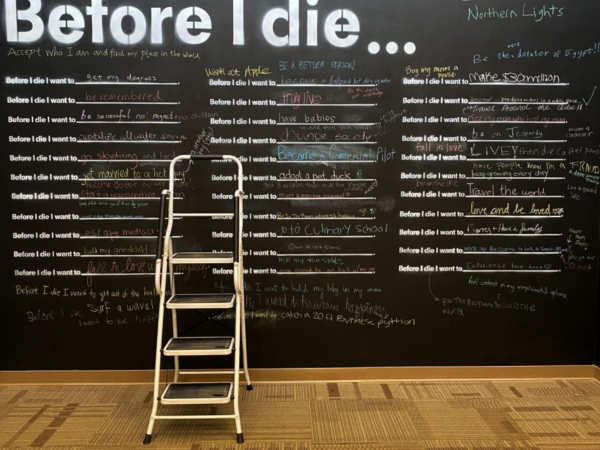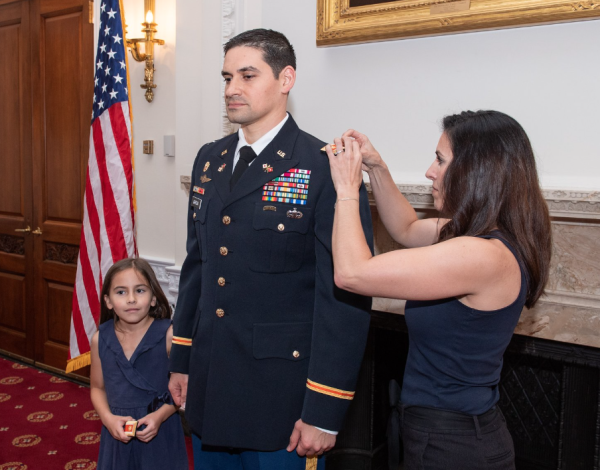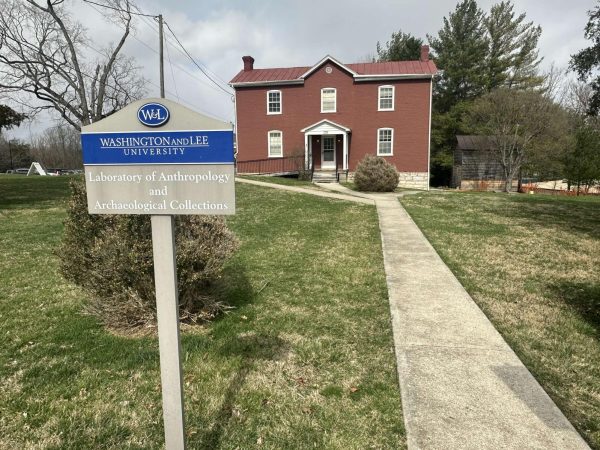Interdisciplinary art installation explores migrant crisis at the southern border
May 19, 2021
One wall of Leyburn Library, on the side closest to Elrod Commons, is currently covered in paper. Sticky notes and an assortment of orange and beige tags mark the paper, and the presence of the cities of Phoenix and Tucson Arizona reveal the wall to be a map.
This is Hostile Terrain 94, an exhibit by the Undocumented Migration Project (UMP) that was brought to Leyburn Library in collaboration with Washington and Lee.
The exhibit maps a section of Arizona’s border with Mexico. Dozens of toe tags are pinned to the map, each representing a life that was lost by someone trying to migrate into the United States from Latin America.
The exhibit invites people to reflect on the perils of migration and the factors that would lead someone to be willing to pay such a high cost. Lining the side of the map is information about the project.
The U.S. Border Patrol policy “Prevention Through Deterrence” (PTD) is specifically cited as a factor in the crisis and an origin for the project. Under PTD, the Sonoran Desert was judged to be “hostile terrain,” and that immigrants would not pass through there. The exhibit highlights those who did attempt to pass through and perished.
The exhibit is interactive, and viewers can take a tag from the envelopes on the table and fill it with the biographical details of someone who died making the journey, or pin a tag to the map themselves, contributing to the recognition of the magnitude of the crisis along the southern border.
In total, the project’s website states that there are “over 3,200 handwritten toe tags that rep-resent migrants who have died trying to cross the Sonoran Desert of Arizona between the mid-1990s and 2019.”
The exhibit was facilitated by professor of anthropology Alison Bell, and benefited from a large amount of student involvement. One student involved in the project was Virginia Laurie ’22, who encountered the project through an art class.
“The stories revealed through this project are heartbreaking, gut-wrenching and hard to hear, but also so important to hear and understand as an American citizen in a country where debates on immigration and immigrants become hypothetical and dehumanized too easily,” Laurie said.
As reported by the Columns, Washington and Lee is one of 125 locations internationally to host Hostile Terrain 94. It is the only institution in Virginia to host the exhibit. The exhibit reportedly took two years of planning. The Mudd Center for Ethics hosted Jason de León, UMP’s executive director, to mark the beginning of the exhibit at the end of April.
Students, faculty, and library staff helped with the creation of the display on the first floor of Leyburn Library. Viewers can participate in the project’s completion by opening up an envelope, filling out a tag, and pinning them to the right spot on the map. Some tags contain information of the person’s age, sex, and cause of death, but others say “unidentified.”
Still, the exhibit recognizes the weight of the project, noting “no one should feel compelled to undertake or to complete this work,” though the creators of the project recommend discussing the experience with others.
Hostile Terrain 94 will remain on display through the summer.












